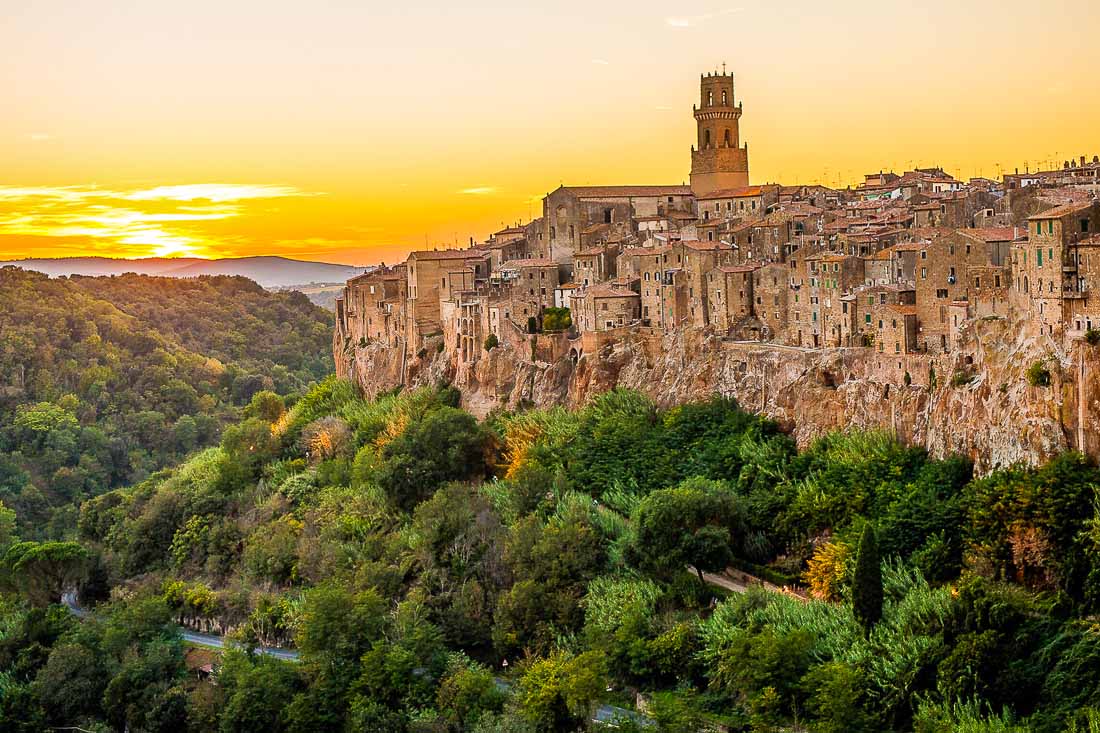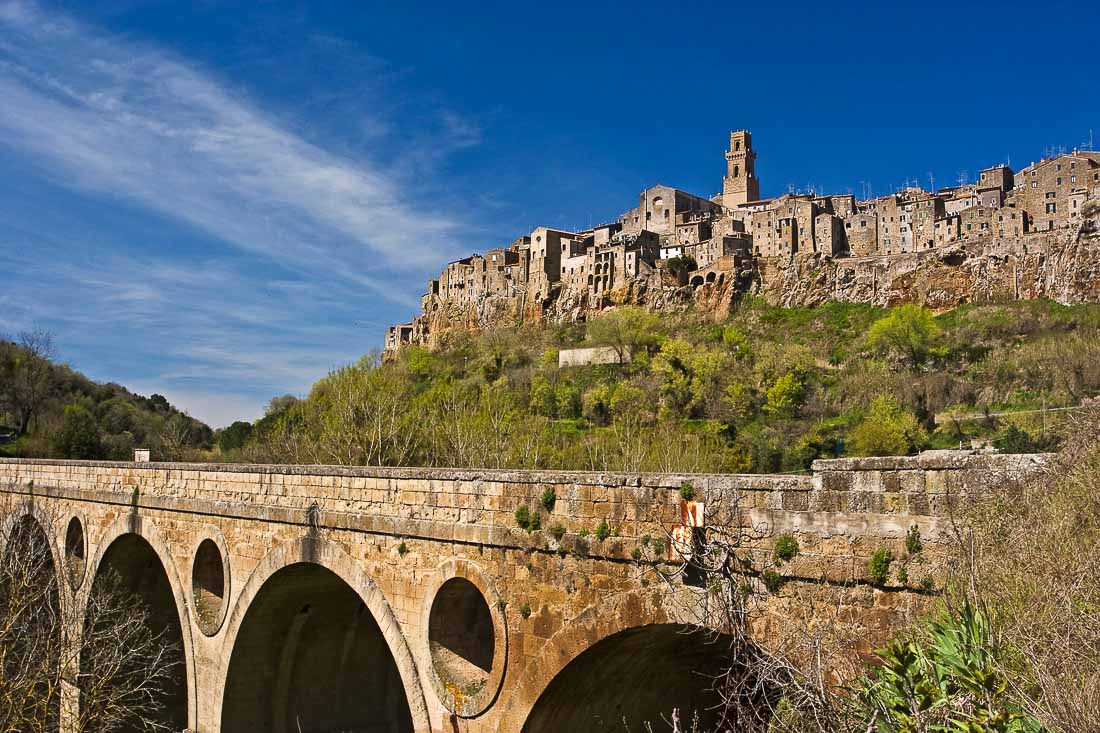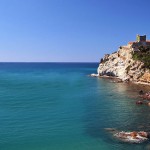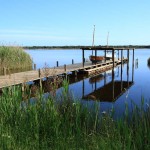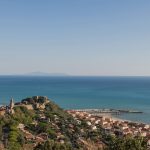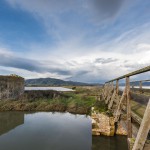13 Jan Pitigliano
The tuff town
Pitigliano is the major centre of a tuff area (other centre are Sorano and Sovana).
Pitigliano is probably the most beautiful town in the area. It appears to have grown from the stone of this wildly beautiful promontory, bounded by green valleys crossed by the Lente, Prochio and Meleta rivers. The high walls of volcanic tuff, carved out by a thousand of caverns, project a series of tower-houses, thus heightening the picturesque feel of this medieval town. After the Etruscan and Roman times the town became an important center in the 15th century. To visit it you have to pass through the arch known as “La Porta” (The Door) that leads to Via Cavour flanked by arches of an aqueduct built in 1543 in honour of Gian Francesco Orsini. The two fountains in the adjacent of the Republic Square (Piazza della Repubblica) at the end of Via Cavour constitute the terminal of the aqueduct. In the large square is the Orsini Palace, the powerful feudal family which dominated before annexation to the Grand Duchy of Tuscany.
The land
Continuing from Piazza della Repubblica along Via Roma we reach the so called “land”: the district of Capisotto, the oldest neighborhood in Pitigliano where is the Cathedral dedicated to Saints Peter and Paul and the Church of St. Mary and St. Rocco, built in the 12th century and rebuilt in the 15th century in honor of Nicholas Orsini. On August 16th in occasion of the celebrations in honor of St. Rocco the women of the town offer homemade biscuits.
The little Jerusalem
The oldest district of Pitigliano is the Jewish Ghetto, now a museum. In Pitigliano a large Jewish population settled down there at the beginning of the 15th century and became an important refuge when they were kicked out of the papal State, after the Papal Notes of 1555 and 1569 and the measures taken by the Grand Duke of Tuscany in 1570. The synagogue (1598, with furnishings of the 17th and 18th centuries) is still officiated from time to time. It was restored in 1995. Protected by the Orsini family, the Jewish community flourished and the city became known as La Piccola Gerusalemme or “Little Jerusalem.” Pitigliano greeted a growing Jewish community until the 19th century. During Fascism, the Jews left the city and after the Second World War, the Jewish community slowly dissolved.
The Ghetto
In a fascinating trip you can recognize these signs of Jewish life. Upon being resettled in this part of Pitigliano, the Jews adapted the already-existent excavated spaces to meet the needs of their community: the ritual bath, the cellar and the butcher house kosher, dye-works and the unleavened bread bakery. The Jewish Museum Culture preserves the traditions of the life of the Jewish community.
The “Sfratto”
One of the most typical products of Pitigliano is the “sfratto dei Goym” a sweet specialty which symbolizes the one used to bang on the Jews’ doors in medieval times to tell them they had to leave their houses and move into the ghetto. Today the “sfratto” is included in Slow Food‘s list of Italian “presidium foods”.
How to get to Pitigliano
From the SS1 Aurelia, direction south, reach Albinia and take the SS 323 of Monte Amiata, then the SS 74 Maremmana, direction Manciano, continue to Pitigliano and follow the signs to Via Massetana direction Massa Marittima.
december, 2025



 BEACHES AND SEA
BEACHES AND SEA VILLAGES AND TOWNS
VILLAGES AND TOWNS PARKS AND RESERVES
PARKS AND RESERVES TUSCANY ISLANDS
TUSCANY ISLANDS MUSEUMS AND ATTRACTIONS
MUSEUMS AND ATTRACTIONS TERMS AND RELAX
TERMS AND RELAX SPORTS AND ACTIVITIES
SPORTS AND ACTIVITIES WINE TESTING
WINE TESTING


